How to Measure Your Head for a Giro Ski Helmet
To measure your head for a Giro ski helmet, use a flexible tape measure. Place it just above your eyebrows and ears, keeping the tape level and snug. Wrap it around the widest part of your head, typically about 1 inch above your eyebrows and ears. Ensure the tape measure is not too tight or loose. If you don’t have a flexible tape measure, you can use a string and then measure it with a ruler. Compare your measurement to Giro’s size chart for the best fit. Proper fit is crucial for safety and comfort, so take your time to get it right. Trying on the helmet is recommended if possible, as head shapes can vary.
Tools Needed for Accurate Measurement
To measure your head for a Giro ski helmet, you’ll need a few simple tools. A flexible tape measure is ideal for wrapping around your head accurately. If you don’t have one, a string and a ruler can work—simply wrap the string around your head and measure its length with the ruler. Ensure the tape or string is level and sits just above your eyebrows and ears. A mirror can help you see the placement of the tape measure. For the most precise fit, take multiple measurements and average them. Accurate sizing is crucial for both safety and comfort, so don’t skip this step. Some helmets also come with adjustable fit systems, but proper initial sizing is still essential.
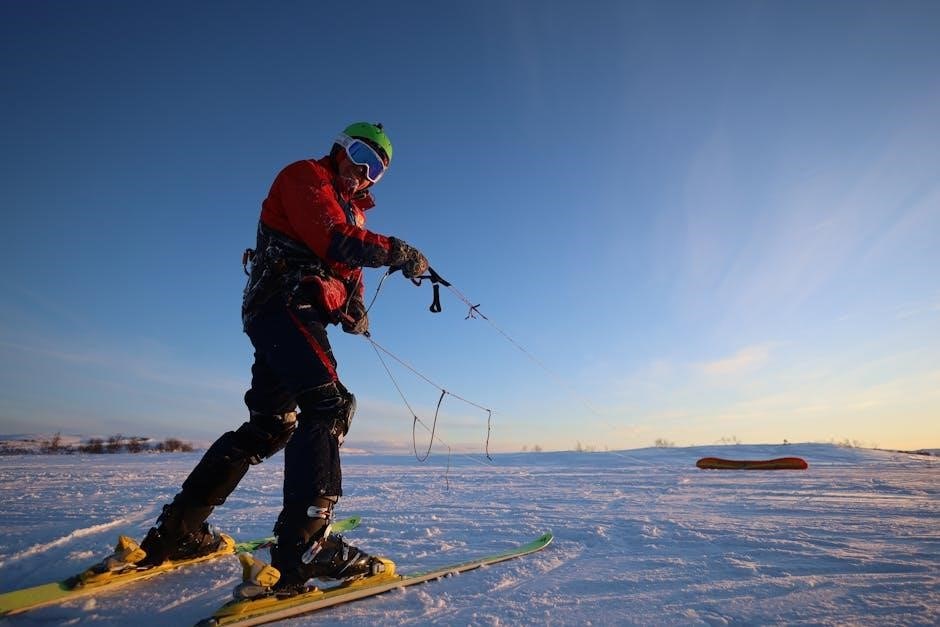
Step-by-Step Measurement Technique
Position the Tape Measure: Place the flexible tape measure around your head, ensuring it is level and sits just above your eyebrows and ears.
Ensure Proper Placement: The tape should be snug but not too tight, wrapping around the widest part of your head.
Check Alignment: Use a mirror to verify that the tape measure is straight and evenly positioned.
Record the Measurement: Take note of the circumference in centimeters or inches.
Repeat for Accuracy: Measure your head at least twice to ensure consistency, then compare your measurement to Giro’s size chart.
Consider Head Shape: If your head shape is particularly round or oval, this may affect how the helmet fits, so try it on if possible.
By following these steps, you’ll ensure an accurate measurement for the best fit. Proper sizing is essential for both safety and comfort while skiing or snowboarding.
Understanding Head Shape and Its Impact on Fit
Head shape plays a crucial role in determining the fit of a Giro ski helmet. Most heads fall into three categories: round, oval, or elongated. Round heads are wider from ear to ear, while oval heads are longer front to back. Elongated heads are narrower and longer. Giro helmets are designed to accommodate these variations, with features like adjustable fit systems to ensure comfort and safety. A mismatch between head shape and helmet design can lead to discomfort or poor protection. For example, a round head in an elongated helmet may feel tight at the temples. Always consider head shape when selecting a helmet size to ensure optimal fit and safety. Proper alignment with your head shape ensures the helmet stays in place and provides consistent protection. Try helmets on if possible, as fit can vary based on individual head contours. Understanding your head shape helps you choose the right helmet for enhanced performance and comfort on the slopes.
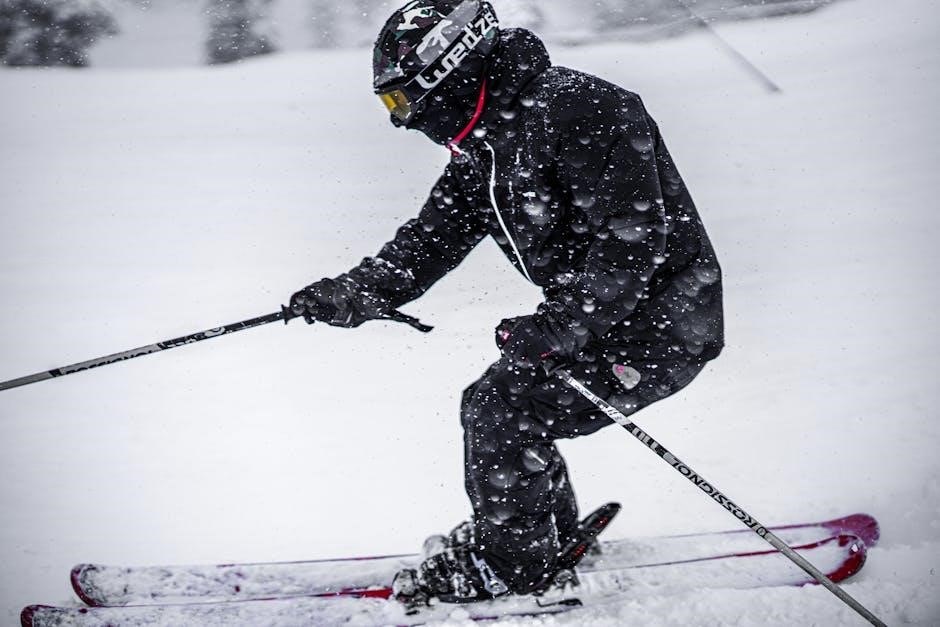
Giro Ski Helmet Size Chart
| Size | Head Circumference (cm) |
|---|---|
| XS | 50-52 |
| S | 52-54 |
| M | 54-56 |
| L | 56-58 |
| XL | 58-60 |
| XXL | 60-62 |
Refer to this chart to find your ideal size based on head circumference measurements. Try helmets on if possible to ensure optimal fit and comfort. Always measure accurately for safety.
Official Giro Size Chart for Ski Helmets
Giro’s official size chart for ski helmets ensures a precise fit, crucial for safety and comfort. The chart categorizes sizes from XS to XXL, corresponding to head circumferences of 50-62 cm. Each size range is designed to accommodate varying head shapes and sizes. To measure accurately, place a flexible tape measure around the widest part of your head, just above your eyebrows and ears. Ensure the tape is snug but not overly tight. Giro’s sizing aligns with industry standards, but trying on a helmet is recommended if possible, as individual head shapes can affect fit. Always refer to Giro’s official chart for the most accurate sizing.
How Giro Helmet Sizes Compare to Other Brands
Giro helmet sizes are generally consistent with other brands, but slight variations may occur due to differences in fit and head shape accommodations. While most brands use similar size ranges (e.g., S, M, L), Giro’s sizing tends to align closely with industry standards. For example, a Giro medium often matches other brands’ medium sizes, but the fit may feel slightly different due to unique padding or shell shapes. Always refer to Giro’s official size chart for accuracy. If switching brands, double-check measurements, as even small discrepancies can affect comfort and safety. Trying helmets on, when possible, is recommended for the best fit.
Importance of Proper Fit for Safety and Comfort
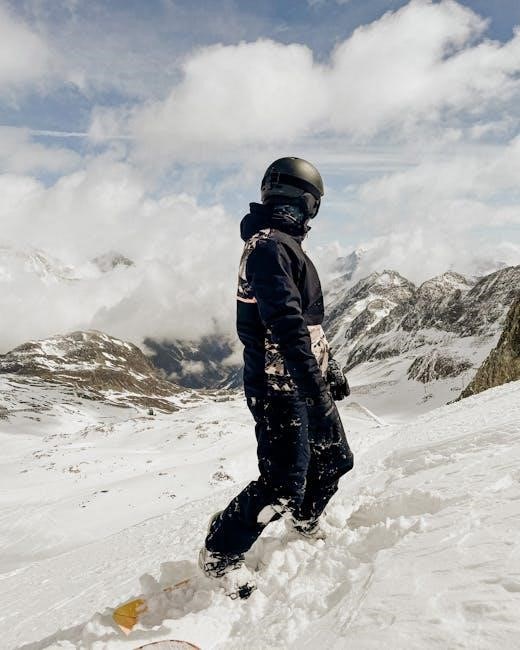
A proper fit is essential for both safety and comfort in a Giro ski helmet. A helmet that fits well ensures optimal protection by staying securely in place during impact, allowing safety features like MIPS technology to function as intended. Incorrect sizing can compromise safety and cause discomfort, leading to distractions while skiing. Giro helmets are designed with adjustable fit systems, such as the In Form 2 Fit System, to tailor the fit to your head shape. A snug, even fit prevents pressure points and ensures consistent airflow for temperature regulation. Proper fit is crucial for maximizing both safety and performance on the slopes.
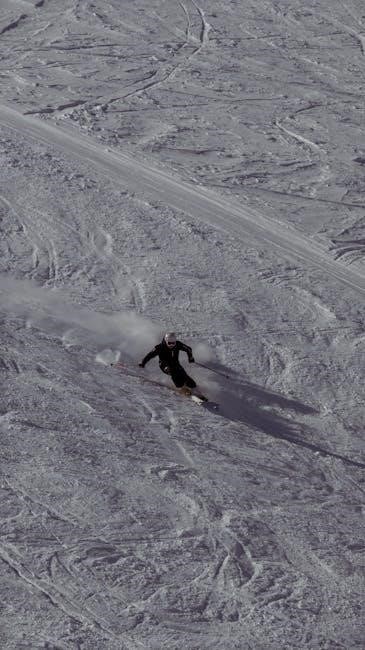
Factors to Consider When Choosing a Helmet Size
When choosing a helmet size, consider head shape, hair volume, and riding style. These factors ensure optimal fit for safety and comfort.
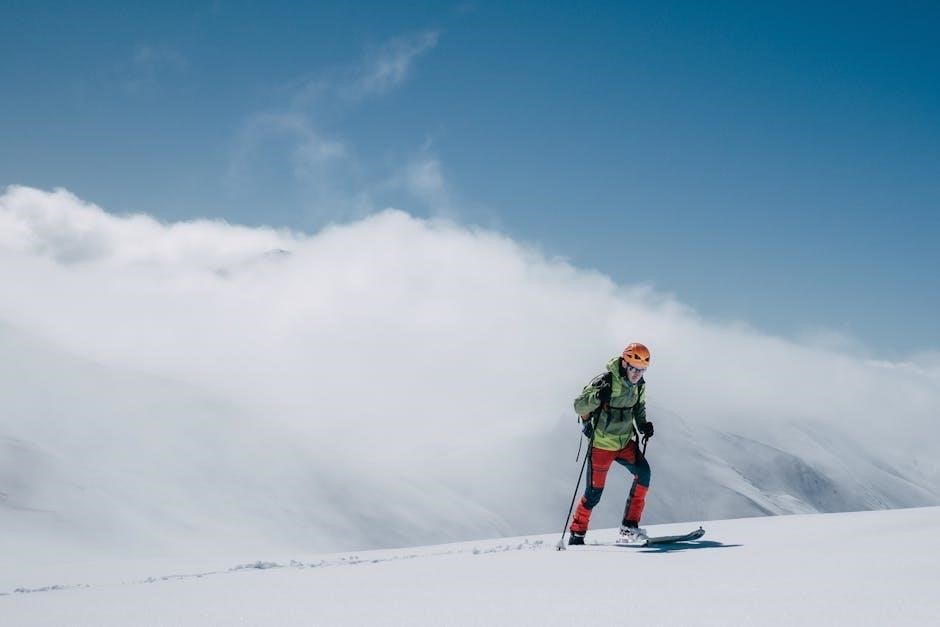
Differences in Head Shapes and How They Affect Fit
Head shapes vary significantly, impacting helmet fit. Common shapes include round, oval, and elongated. Round heads may find certain helmets too tight, while oval heads might experience pressure points. Elongated heads often require more room front-to-back. Giro helmets are designed to accommodate these variations, but understanding your head shape ensures optimal comfort and safety. Proper fit prevents shifting and discomfort, enhancing performance and protection. Trying helmets on, if possible, helps confirm compatibility with your unique head shape, ensuring a secure and comfortable fit for skiing or snowboarding.
Impact of Hair Volume or Hats on Helmet Size
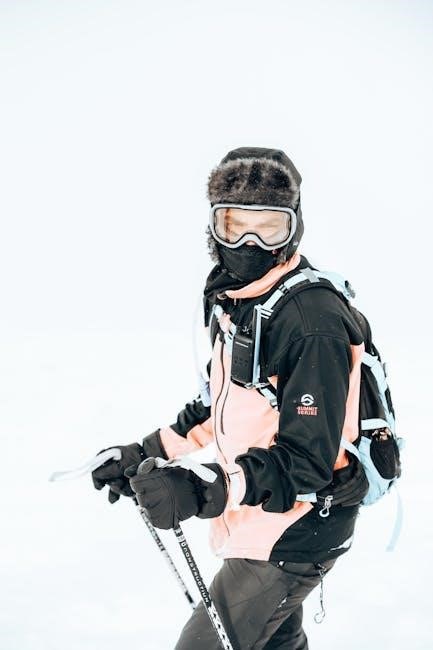
Hair volume and hats can significantly affect helmet sizing. Thicker hair or hats add bulk, potentially requiring a larger size for a snug fit. Conversely, minimal hair or no hat allows for a standard size. Giro helmets are designed with adjustable systems to accommodate such variations. When measuring your head, consider whether you’ll wear a hat underneath. If so, measure with the hat on to ensure accuracy. Proper fit with or without accessories is crucial for both safety and comfort, ensuring the helmet stays secure during activities like skiing or snowboarding without causing discomfort.
How Riding Style Influences Helmet Fit Preferences
Your riding style significantly impacts helmet fit preferences; For aggressive downhill skiing, a snug, secure fit is crucial to prevent shifting during high-speed maneuvers. All-mountain riders may prefer a slightly looser fit for comfort during long days on the slopes. Freestyle skiers often opt for helmets with a bit more room to accommodate goggles and movement. Giro helmets cater to these preferences with adjustable systems, ensuring a balance of protection, comfort, and flexibility. Whether carving through groomers or tackling backcountry terrain, the right fit ensures optimal performance and safety, tailored to your specific skiing needs and style.
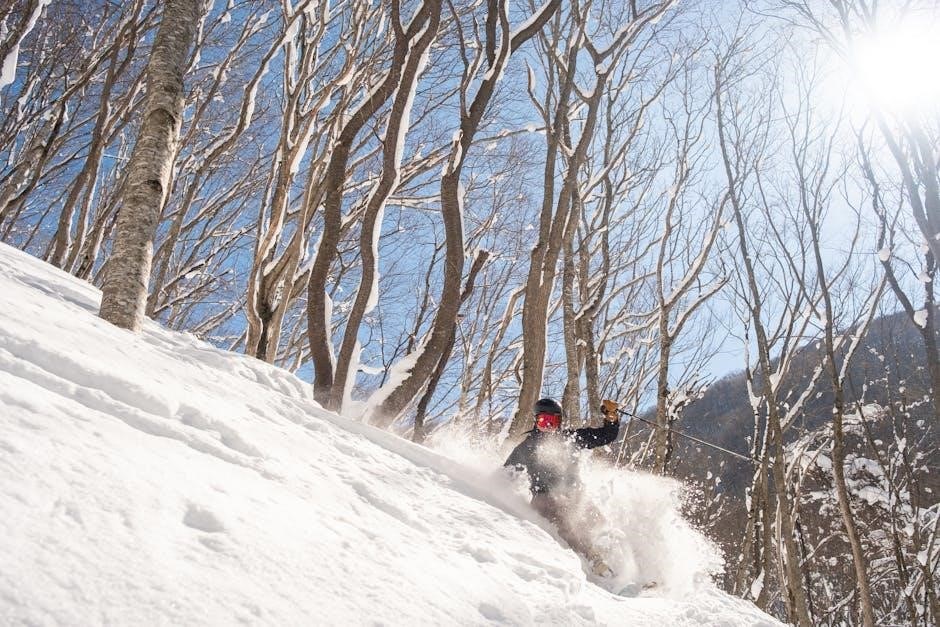
How to Try On a Giro Ski Helmet
To try on a Giro ski helmet, ensure a snug fit with the front low on your forehead and level. Buckle the chin strap tightly to test stability. Proper positioning is key for safety and comfort.
Where to Find Giro Helmets for Trying On
Giro ski helmets are widely available at specialty ski shops, outdoor retailers, and sporting goods stores. Many retailers offer in-store try-on options, allowing you to test the fit and comfort. You can also visit Giro’s official website or authorized dealers like REI, Backcountry, or Evo. Some online retailers provide flexible return policies, enabling you to try helmets at home. Additionally, local bike shops often carry Giro helmets, as they are popular in both skiing and cycling communities. Trying on a helmet in person ensures the best fit and comfort for your specific head shape and riding style.
What to Look for in Terms of Fit and Comfort
A proper fit is essential for both safety and comfort. Ensure the helmet sits level on your head, with the front edge just above your eyebrows and the back sitting low enough to cover the base of your skull. The helmet should feel snug but not overly tight, with even pressure around your head. Check that the cheek pads fit comfortably and the ear openings are unobstructed. Adjust the fit system to secure the helmet in place. When you shake your head gently, the helmet should not shift. If you have long hair or wear a hat, ensure it fits under the helmet without affecting the fit. Look for features like MIPS technology for added safety without compromising comfort. Proper fit ensures optimal protection and all-day wearability on the slopes.
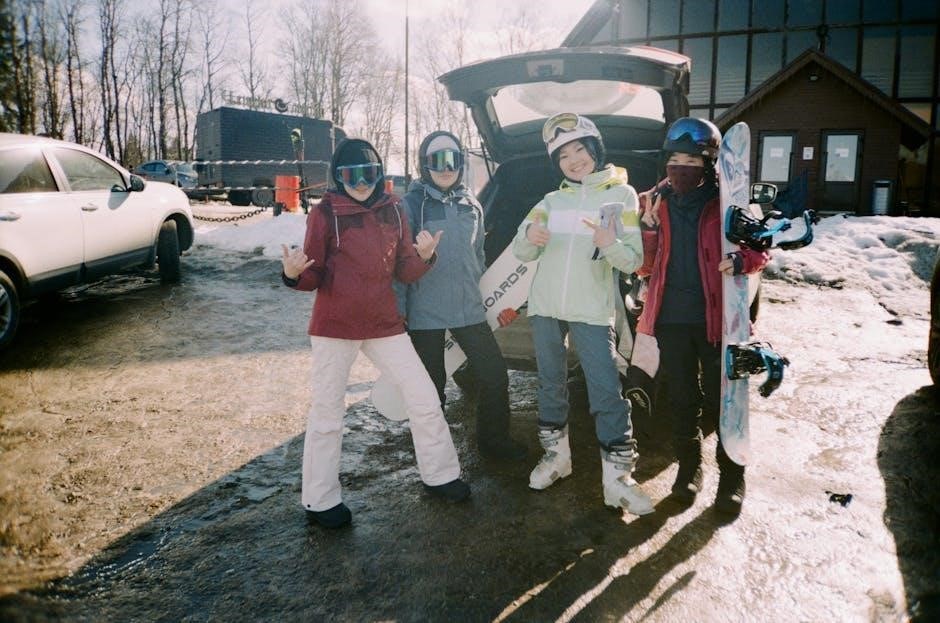
Common Mistakes to Avoid When Trying On Helmets
One common mistake is not trying the helmet on with the hairstyle or hat you plan to wear while skiing, as this can affect fit. Another error is ignoring proper alignment, with the helmet sitting too far back or tilted. Avoid relying solely on size charts without actual try-on, as head shapes vary. Do not overlook the importance of snugness—too loose, and the helmet may shift during impact; too tight, and it can cause discomfort. Also, refrain from judging fit without adjusting the fit system or removable padding. Finally, never skip checking for movement by gently shaking your head while wearing the helmet. Proper fit is crucial for both safety and comfort.
Advanced Features to Consider in Giro Helmets
Giro helmets feature MIPS and Spherical Technology for enhanced impact protection, superior ventilation systems for optimal airflow, and customizable fit systems like Roc Loc for a tailored fit.
Understanding MIPS and Spherical Technology
Giro helmets incorporate MIPS (Multi-Directional Impact Protection System) and Spherical Technology for superior safety. MIPS adds a low-friction layer that reduces rotational forces during crashes, enhancing protection against oblique impacts. Spherical Technology uses a ball-and-socket design to absorb and redirect energy, mimicking the brain’s natural protective mechanisms. These advanced features work together to provide exceptional protection without compromising comfort or style. Both technologies are seamlessly integrated into Giro helmets, ensuring a safer and more enjoyable skiing or snowboarding experience. They are designed to handle various types of impacts, making them a top choice for enthusiasts seeking reliable protection.
Importance of Ventilation and Weight Distribution
Proper ventilation and weight distribution are crucial for comfort and performance in Giro ski helmets. Ventilation systems, such as Giro’s VENT Optimization, enhance airflow to regulate temperature and reduce fogging. This ensures clear vision and prevents overheating during intense activities. Weight distribution is equally important, as an evenly balanced helmet reduces fatigue and enhances stability. Giro helmets are designed with a focus on lightweight construction without compromising durability, making them ideal for long days on the slopes. These features work together to provide a comfortable, secure fit that allows riders to perform at their best. Advanced engineering ensures optimal ventilation and weight distribution, making Giro helmets a top choice for skiers and snowboarders seeking both safety and comfort.
Custom Fit Systems for Enhanced Comfort
Giro ski helmets feature advanced custom fit systems designed to enhance comfort and ensure a secure fit. The In Form 2 Fit System allows for precise vertical and horizontal adjustments, ensuring the helmet conforms to your head shape. Roc Loc technology provides easy-to-use dials for on-the-go adjustments, while the removable and washable padding offers tailored comfort. These systems work together to minimize pressure points and maintain stability, even during high-speed activities. By combining adjustable fit systems with lightweight construction, Giro helmets deliver unparalleled comfort and performance for skiers and snowboarders of all levels. Custom fit ensures optimal safety and comfort all day long.




Leave a Reply
You must be logged in to post a comment.